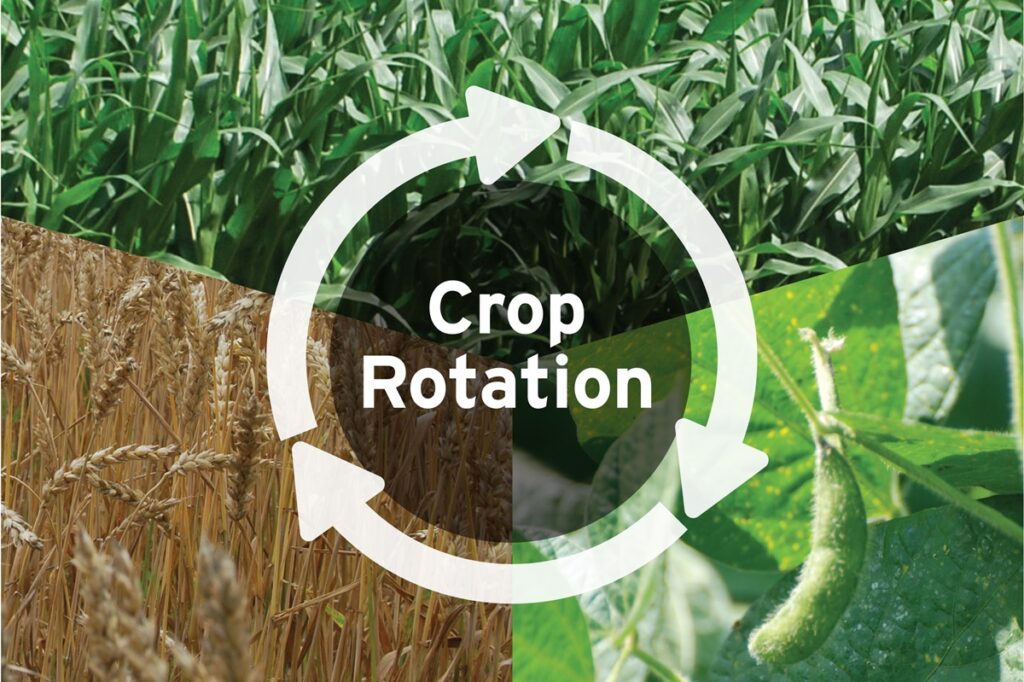Crop rotation diversification
MEASURING STABILITY IN LONG-TERM STUDIES

Research shows that diversifying crop rotation can bring a variety of benefits, but it remains a complex practice with many context-specific responses that need more research.
Amélie Gaudin, associate professor and endowed chair of agroecology in the Department of Plant Sciences at the University of California Davis, studies various aspects of cropping systems and rotation diversity across North America.
“There is large power in long-term trials because we can see time trends that can help inform the future in terms of yield benefits and input savings,” she says. “We can look at the shift in productivity over time, but what’s interesting is we can also look at stability over time.”
Gaudin’s interest in crop rotation stability research started in 2012 when she studied and worked at the University of Guelph. There was a significant drought early in the season, and her research team began to notice differences in corn leaf rolling in response to rotation and tillage at the long-term trials in Elora.
“We can look at the very dry years, the very wet years and yield trends over time to study stability,” she explains.
Since more erratic weather is forecasted and drought episodes and heavy rainfall are going to become more common, Gaudin believes agriculture needs to adapt and improve current systems.
COMBINING DATA
To begin studying large patterns over time, she combined data from the Elora and Woodslee sites with nine other long-term trials across eight states. The result is 347 site years of data comparing corn grown in simple rotations and corn grown in complex rotations.
The data collection shows the impact of adding a new crop and continuing rotations over time on corn yield. According to Gaudin, the longer you diversify your cropping system, the more you benefit in yield.
She also analyzed the benefits of rotation under stressful conditions at each site or the difference between the lowest and highest rotational complexity index (RCI) at the lowest environmental index (EI). The benefits were seen especially at lower nitrogen levels and when legumes other than soybeans were included in the rotation.
Gaudin explains that the lower the yield potential, the greater the opportunity for yield benefits from crop rotation diversification.
How much diversification is needed is still a big question, but there are indications that it’s more about having different types of crops than having a large number of crops, she says.
CROP INSURANCE
Since one of her research goals is to investigate how diversified rotations can lower crop insurance claims, Gaudin and her research team have partnered with insurance companies.
Using models from the insurance industry and translating data from the 11 long-term trial sites into risk, she analyzed two questions: What is the increased risk of crop failure? What is the increased opportunity for a bumper crop?
“Rotational diversity reduces the risk of crop failure and increases the opportunity to get a good yield maize crop when conditions are favourable,” says Gaudin.
While the researchers were unable to access quality insurance data from Ontario, drought was the most common type of damage claim in all other site locations. In a hot and dry year in Ontario, a diversified corn-soybean rotation with reduced tillage increased corn yield by seven per cent and soybean yield by 22 per cent.
The researchers have shared their findings with American insurance companies for the last four years. The understanding is that the insurers are using the data to build new models and develop variable rate insurance premiums that will benefit growers with diverse rotations.
According to Gaudin, the longer you diversify your cropping system, the more you benefit in yield.
DROUGHT RESISTANCE
Gaudin and a PhD student recently worked on a drought manipulation experiment based in Elora. They used a corn-corn-soy-soy rotation, corn-corn-soy-wheat rotation and corn-corn-oat/red clover-barley/ red clover rotation under conventional tillage and no-till. Irrigated, ambient rainfall, and drought water rates were studied using below- canopy rainout shelters.
A variety of soil and crop developmental and eco-physiological trait measurements showed that diversification minimizes drought-induced yield losses and changes in plant water status. Canopy temperature was a key measure of water stress.
“But we found that there is not much difference in soil organic matter between those different types of rotations,” Gaudin says. “That was a surprise because we saw lower compaction in more diverse rotation, especially under no-till, and we saw an increase in field capacity and an increase in available water capacity.”
In addition, there were limited to no shifts in plant water uptake depth or rooting patterns with rotation diversity.
Even though soil organic matter was not higher in the diversified treatment, the statistical analysis confirmed it is a significant regulator of plant water status.
Overall, crop rotation diversification enhances the climate change adaptation potential through soil organic matter despite no significant increase in soil organic matter with diversification.
Gaudin presented “The Rotation Advantage” with moderator Peter Johnson in an on-demand Ontario Agricultural Conference session. View this session, plus 65 more, until March 31 at ontarioagconference.ca. •
























